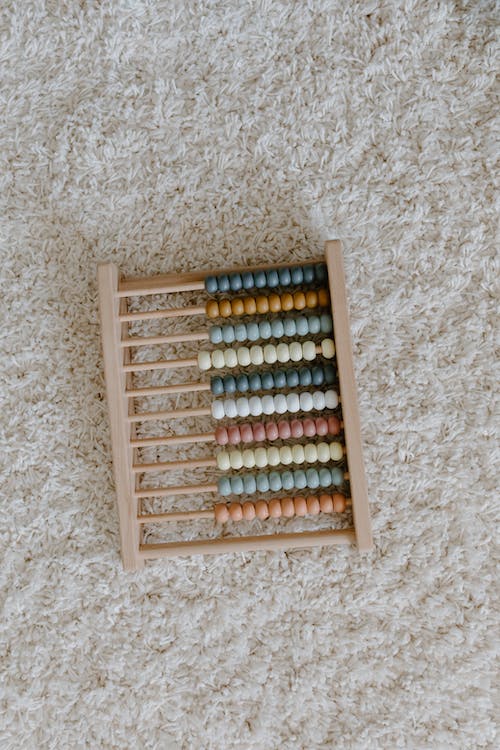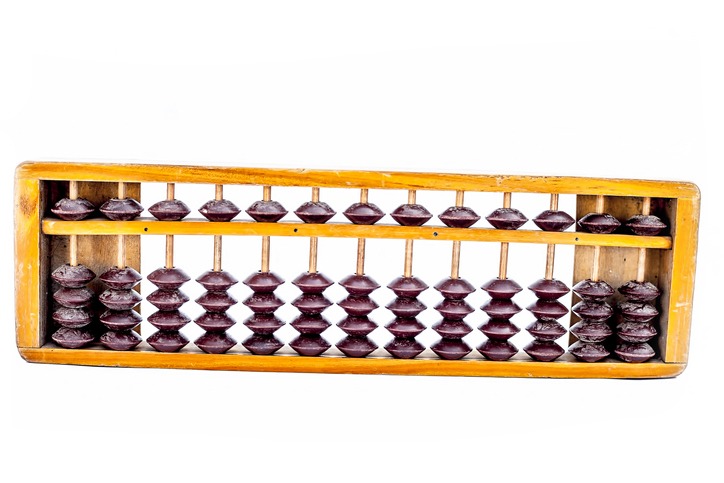The abacus was one of the prominent calculating tools used by man before the invention of the electronic calculator. Seen throughout multiple regions of the world, the abacus has been used not only by the elite and government officials but also by small traders and vendors who want to count their inventory and calculate the changes that they give to their customers.
Its name comes from the Greek word abakon or abax, which means tablet or table, but the word abacus itself is Latin. The abacus has also been given other names in different countries; in China, it is called suanpan, while in Japan, it is called soroban. The functions of the abacus in various nations change depending on each country’s tradition and culture, and that is why there have been many kinds of abacuses used throughout the years.
Let’s dive into the rich history of the abacus and learn more about the different types of abacuses in the world.
Salamis Tablet
Until now, no one knows exactly where the first abacus came from. Many are arguing that the first abacus was used in China during the 2nd century BC, while others believe that the ancient Greeks were the ones who have invented it.
One of the most substantial evidence of the Greeks using the first abacus is the discovery of the Salamis Tablet in 1846. Believed to have been using during 300 BC, it is currently considered the oldest counting table on Earth.
Before the invention of the Salamis Tablet, researchers suggested that people only used their fingers and their toes to count, but when the Greeks realized that their hands and feet could be quite inconvenient to use when counting, they have devised a way of counting larger numbers using a slab of marble to form columns and rows to indicate which number they are calculating.
The row of lines in the marble slab usually group numbers by powers of ten, and pebbles are placed in lines or in the space between them to represent a value. If a pebble is placed on the first line, it means that its value is at 1, and if you move the pebble at the space before the second line, the value of the pebble becomes 5. Once you place one pebble to the first line and you put another stone to the center of the first and second line, the total value in the table is now 6.
However, once the Salamis Tablet gets a line in the middle of the rows, the right column represents the positive integers while the left side represents the negative integers. This division of integers is often used for subtracting value in the tablet.
Suanpan
Before the discovery of the Salamis Tablet, historians are convinced that China was the country of origin for the first abacus because of their invention of the suanpan.
The suanpan is divided into two compartments; the first compartment has two beads that are inserted into each short rod, while the second compartment is longer and has five beads in each rod.
The two beads on the upper deck, often called in China as heaven beads, have a value of five per each bead, and people would have to lower the bead to indicate that the value is used. Each of the five beads on the second deck, called Earth or water beads, shows the value of one, and they have to be raised to signify that their values are in use. The rightmost rod in the suanpan indicates the lowest number, while the leftmost rod is designated to the highest number.
To demonstrate the use of the rods in the suanpan, let us imagine that we have a line that is divided into two rows, with two beads at the first row and five beads in the second row. If we move one bead at the first row down, that means that the value of the rod is at 5, but once we raise one bead in the second row, the value becomes 6.
Now, let’s imagine another line to the right of the previous line, then place two beads at the second row up. The two beads indicate that the value of the second line is at 2, but since it is at the second column, we must add a 0 next to the 2, which means that the correct value is 20. We then combine the value of the two lines, and the total value that we get is 26.
It is interesting to note that the suanpan has similarities to the Roman abacus, a calculating tool that became the successor to the Salamis Tablet, as they both used beads and rods to indicate value. Historians suggest that the Romans might have introduced the Chinese to the abacus because of trading, but there is currently no evidence of trades that have happened between the two.
However, there is evidence of trading between China and another country called Japan during the 14th century, which led to the invention of the Japanese soroban.
Soroban
The Japanese soroban was at first very similar to the Chinese suanpan, as it also used a 2:5 system of calculating for value.
However, during the 1940s, the soroban was developed into a simpler abacus as it eliminated the fifth bead in the lower row and the second bead at the upper row as they are rarely used, especially the second bead since using it indicate that the total value of the rod is 10 or more, which can make calculating for the full value in the abacus more complicated.
Each bead on the soroban is shaped like a diamond for a better grip, and there have been many kinds of soroban developed in Japan using these diamond beads.
Because it is much more compact and easier to use than the suanpan, the soroban has been used in China and also other countries in the world where abacus is prominently used. Recently, Chinese factories have manufactured the sorobanusing durable plastic beads and aluminum frames. This modern soroban has a “clear all” button, which automatically reverts the numbers in the abacus back to zero.
Schoty
The Russian abacus, often called the schoty, became popular in the 1600s due to being one of the simplest abacuses in the world since it doesn’t have separate compartments compared to the suanpan and the soroban that has two.
Also, while the suanpan and the soroban are oriented vertically, the schoty’s wires and beads are placed horizontally. One bead in the Russian abacus’ lowest rod represents 1, the second to the lowest beads indicate 10, the next row signifies 100, and so on.
This type of abacus is commonly used in schools to teach arithmetic to children in pre-school and elementary.
Competition with the Calculator
While the arithmetic utilized in the abacus or suanpanis still being taught to children in China during the 1990s, the rising popularity of the calculator made the tool unused and unseen in almost every corner of the country. The calculator is proven to be much more convenient to use than the abacus, as the electronic device calculates the total value for you as opposed to the abacus, where you still have to compute the numbers on your own.
However, the reason why abacuses are still being used and taught in schools today is that it helps children to enhance their mental arithmetic skills instead of relying on machines and devices to calculate for them.
By relying too much on electronic devices, children are unable to learn math properly as most calculators do not show how they reach their final computations. To further encourage children to use abacuses, many organizations hold abacus competitions every year to promote the benefits of abacuses in improving specific thinking skills.

